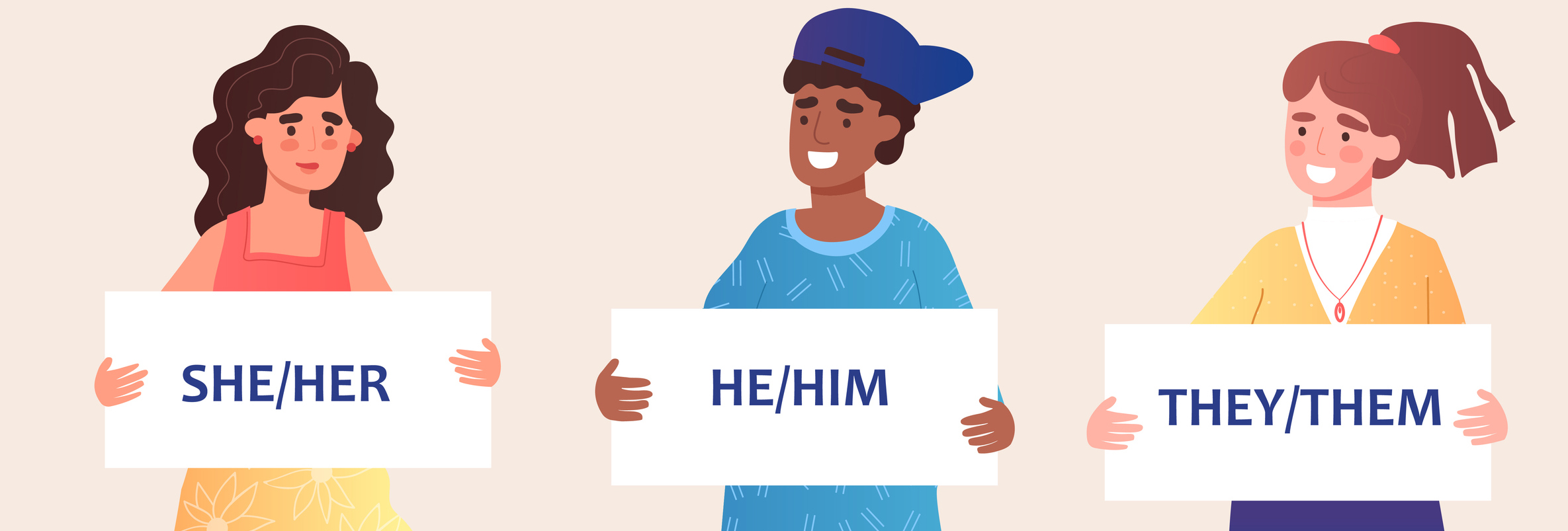Shakespeare wrote “a rose by any other name would smell as sweet,” but when it comes to choosing pronouns for another person, making incorrect assumptions can be considered a microaggression or even psychological violence.
It’s called “misgendering,” the process of mistakenly assuming other people’s gender identity based on their appearance or name and, therefore, using improper pronouns when referring to them.
“It’s basically you invalidating who they are as a person,” said Dr. Derek Fenwick (he/him), a psychologist with the Institute of Living (IOL), part of the Hartford HealthCare Behavioral Health Network.
In Pride Month, he and Dr. Brianna Pollock (she/her), also an IOL psychologist, said much attention is given to properly and respectfully identifying individuals in the LGBTQ community. This involves understanding that gender identity is an internal sense of one’s gender, and not something you can know simply by looking at someone.
One also must look beyond society’s gender binary of male and female to include those who identify as gender neutral, also called nonbinary or gender nonconforming, and use the pronouns they and them.
“It’s often difficult for people to get outside of that binary. It’s about being more flexible and curious by asking others what their names and pronouns are,” Dr. Fenwick noted.
His personal style is to introduce himself by name and say, “My pronouns are he and him.” Often, other people will reply with a name and pronouns. If they only give their name, he said it’s perfectly acceptable to ask about the pronouns.
“It’s more nuanced in the sense that expression is often different than how they identify as a person,” he said. “An individual may dress in what society considers more masculine clothing, but could identify as non-binary or gender fluid.”
Assuming and assigning what you think is the correct pronoun can be devastating to the other person, Dr. Pollock said.
“Imagine what it would be like to have someone call you by the wrong name,” she said. “You’d think they don’t care enough, and you would leave that encounter feeling negative about it and the other person. We need to challenge those unconscious assumptions, which requires a little more effort.”
The effort can be life-saving. Research has shown that transgender and nonbinary youth who have their pronouns respected by the people in their lives were half as likely to attempt suicide as those who did not have their pronouns respected.
One of the hardest adjustments for people is using the pronouns they and them for individuals identifying as non-binary, Dr. Fenwick said.
“It’s difficult for some people to wrap their brains around, but we already use them for singular people in some cases,” he said. “People need to understand that gender is very fluid, and challenge themselves to think outside their comfort zone.”
Repeated use of the correct pronoun will help it become habit for people, especially in families with people who have come out as non-binary.
“Each individual person is different – some don’t mind if people accidentally use the wrong pronoun, but, to others it is really important that you get it right. Maybe they feel misgendered in school, work or elsewhere,” Dr. Fenwick said. “Ask so you can validate them as a person.


